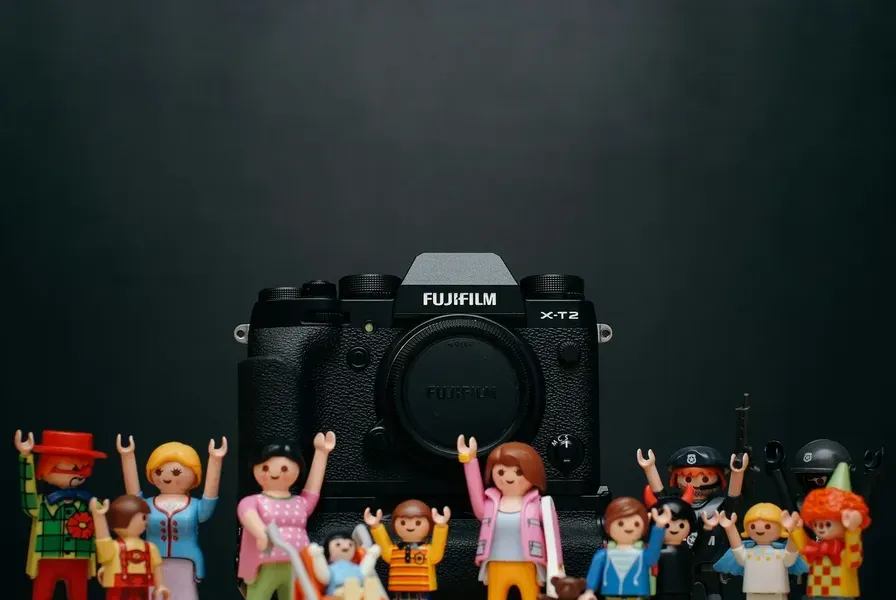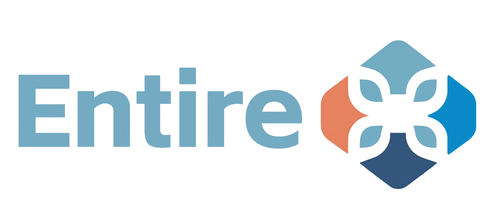Baby Festive & Novelty Items (HS 9505) Tariffs: Seasonal Product Guide

The 2025 US tariffs on Chinese imports will also affect festive, carnival, or other entertainment articles under HS Code 9505. For the Toys & Baby Products sector, this category is relevant for seasonal holiday-themed items (plush toys, nursery decorations for Christmas, Easter, Halloween), party favors and decorations for baby showers or young children's birthdays, and simple costumes for babies and toddlers. Brands like Carter's (holiday plush), Gund (seasonal bears), party supply companies (Amscan, Oriental Trading), and costume specialists (Rubie's, Disguise) will need to evaluate their sourcing. Key concerns involve sourcing materials like plush fabrics, felt, simple plastics, and printed paper/cardboard, and ensuring compliance with ASTM F963 for toy-like items, and potentially 16 CFR Part 1610 (flammability of clothing textiles) for costumes.
- 1. Festive Imports: How Much Does the US Rely on China for Baby's First Celebrations?
- 2. Global Party Planners: Where Else to Source Safe & Festive Baby Novelties?
- 3. The Price of Merriment: Cost Shifts for Sourcing Baby's Festive Gear Globally?
- 4. Festive Paper Trails: USMCA Rules for North American-Made Baby Party Goods?
- 5. Seasonal Shipping Squeeze: Logistics of Festive vs. Everyday Baby Items?
- 6. Beyond the Sparkle: Critical Safety Deep Dive for Festive Baby Products?
- 7. Holiday Headaches: Unmasking Supply Chain Risks for Seasonal Baby Novelties?
1. Festive Imports: How Much Does the US Rely on China for Baby's First Celebrations?
How reliant is the US market on China for HS 9505 infant/toddler festive and party supplies, such as Carter's holiday-themed plush, Gund seasonal bears, Amscan baby shower decorations, or Rubie's/Disguise infant Halloween costumes?
China is a very significant source for these types of seasonal and novelty items, with an estimated 70-85% of US imports in this category originating there. This is because:
* Seasonal Production Flexibility: Chinese factories are adept at handling large, seasonal orders with relatively short lead times for items like Halloween costumes or Christmas plush.
* Cost-Effectiveness for Low-Price Items: Many party favors and simple festive decorations are low-cost, high-volume items where China's manufacturing efficiencies are crucial.
* Mixed Material Capabilities: Products often combine textiles (plush, felt for costumes), plastics (small novelties, molded decorations), and paper (party hats, banners), all of which China can produce and assemble competitively.
2. Global Party Planners: Where Else to Source Safe & Festive Baby Novelties?
Beyond China, for items like Meri Meri boutique party supplies or Pottery Barn Kids holiday decor, are there reliable alternative manufacturing hubs in Southeast Asia (e.g., Vietnam, Indonesia, India for textiles/crafts), Mexico, or Eastern Europe for material safety (non-toxic dyes, safe plastics), and meeting ASTM F963 (toys) and 16 CFR 1610 (costume flammability) standards?
Alternatives are being explored, especially for higher-value or less time-sensitive festive goods:
* Southeast Asia (Vietnam, Indonesia, India): These countries have strong textile and handicraft industries, suitable for plush festive items, sewn decorations, and some simpler costumes. Vietnam also has good plastics and paper printing capabilities. Ensuring consistent quality and safety compliance (especially flammability for costumes) requires diligent supplier management.
* Mexico: A good nearshoring option for paper-based party goods, simple plastic novelties, and potentially for final assembly or embellishment of costumes if fabric components are sourced elsewhere. Speed to market for seasonal items is an advantage.
* Eastern Europe (Poland, Romania, Turkey): Can offer good quality for textiles, paper products, and some light manufacturing. Often higher cost but with good compliance with EU safety standards, which are generally strict.
* Key Safety Standards: ASTM F963 applies to any festive item with toy-like characteristics (e.g., small parts, sound, plush). For costumes, the flammability requirements of 16 CFR Part 1610 (Standard for the Flammability of Clothing Textiles) are critical, particularly for children's sleepwear-like costumes or those with flowing parts.
3. The Price of Merriment: Cost Shifts for Sourcing Baby's Festive Gear Globally?
What are the unit cost differences when sourcing infant holiday plush toys from India or producing plastic party favors in Vietnam, compared to similar Chinese products (considering fabric quality like short vs. long pile plush, fill cleanliness/resilience, plastic part finish/color, and print clarity)?
- Infant Holiday Plush (India vs. China): Indian production might be +5% to +15% more expensive for comparable quality. While India has good textile skills, China has a highly optimized supply chain for plush toy manufacturing, including sourcing of specific plush fabrics and accessories (eyes, noses, ribbons). Quality of stitching, embroidery, and safety of small attached parts are key.
- Plastic Party Favors (Vietnam vs. China): Vietnamese production could be cost-neutral to +10% more than China for simple molded plastic items. China's massive scale in producing very low-cost plastic novelties is hard to beat. Ensuring non-toxic plastics and colorants is vital.
4. Festive Paper Trails: USMCA Rules for North American-Made Baby Party Goods?
For manufacturing infant/toddler party paper goods (hats, banners) in Mexico or Canada, can USMCA origin rules be met? What are the requirements for imported specialty paper (e.g., pearlescent, coated cardstock), eco-friendly inks, or textile embellishments (ribbons, small decorations on costumes)?
USMCA origin for HS 9505 items, if classified as paper goods or textile articles, would follow those respective chapter rules:
* Paper Party Goods: If imported paper is printed, cut, and assembled into party hats or banners in Mexico/Canada, this substantial transformation typically confers origin.
* Costumes/Textile Festive Articles: If imported fabric is cut and sewn into a costume in Mexico/Canada, it usually qualifies (the "yarn-forward" rule may have exceptions for some festive articles or if using US-formed fabric). Imported ribbons or small non-textile embellishments usually don't change the origin if the primary costume is made in North America.
* The specific USMCA rule of origin will depend on the final classification of the festive good.
5. Seasonal Shipping Squeeze: Logistics of Festive vs. Everyday Baby Items?
How do logistics differ when transporting a container of seasonal festive products (e.g., Halloween costumes, Christmas plush) from China/Vietnam to the US, compared to year-round toys or basic party supplies, in terms of order cycles, inventory risk (obsolescence post-season), and rapid replenishment for short sales windows?
- Seasonal Festive Products: Characterized by highly concentrated demand in short sales windows (e.g., Halloween, Christmas). Requires placing large orders well in advance (often 6-9 months). High inventory risk – unsold seasonal merchandise is heavily discounted or written off. Air freight is sometimes used for late top-ups but is very expensive. Accurate forecasting is critical but difficult.
- Year-Round Toys/Basic Party Supplies: More stable demand, allowing for more regular ordering cycles and inventory management. Less risk of sudden obsolescence. Sea freight is standard.
6. Beyond the Sparkle: Critical Safety Deep Dive for Festive Baby Products?
When importing infant/toddler festive and party items, beyond ASTM F963 for toy-like articles, what specific concerns: costume flammability (16 CFR 1610, especially for 0-14 yrs), choking hazards from small decor/favors, FDA cosmetic rules for face paint/temporary tattoos (if any), and battery safety for light-up/sound items, need focus?
Safety is multi-faceted for festive items:
* Costume Flammability (Critical): All children's apparel, including costumes, must meet the flammability standards of 16 CFR Part 1610. For items resembling sleepwear, the even stricter standards of 16 CFR Parts 1615/1616 may apply. This is a high-priority testing area.
* Choking Hazards: Small parts from decorations, party favors, or detachable costume elements must pass ASTM F963 small parts testing if the item is accessible to children under 3 or is a toy.
* Face Paints/Temporary Tattoos: If included, these are regulated as cosmetics by the FDA and must use FDA-approved colorants and be non-toxic and non-irritating.
* Battery Safety (for Light-up/Sound Novelties): Button cell batteries must be in secure compartments (requiring a tool or two independent actions to open). All battery-operated toys must meet ASTM F963 requirements for battery ingestion/leakage prevention.
* Strangulation Hazards: Drawstrings, ribbons, or long cords on costumes or decorations must meet length and attachment requirements to prevent strangulation risks (ASTM F963).
* Sharp Points/Edges: Any plastic or metal components must be free of hazardous sharp points or edges.
7. Holiday Headaches: Unmasking Supply Chain Risks for Seasonal Baby Novelties?
Are there supply chain vulnerabilities for soft plush fabrics (polyester), clean PP cotton or fiberfill, non-toxic ABS/PP plastic novelty components, or eco-friendly paper/inks used in baby festive items, due to concentrated seasonal demand, price spikes, or reliance on specific handcrafting skills (embroidery, complex assembly)?
Yes, vulnerabilities exist:
* Seasonal Demand Bottlenecks: The highly concentrated demand for Halloween and Christmas items can strain factory capacity for plush, textiles, and printing in peak season, leading to longer lead times or higher prices if orders are placed late.
* Plush Fabrics & Fiberfill: Consistent quality and color of plush fabrics, and clean, resilient polyester fiberfill, are essential. Spot shortages or price increases for these raw materials can occur.
* Plastic Novelty Components: While generally widely available, ensuring that small, low-cost plastic components (e.g., noisemakers, molded charms) are made from non-toxic, compliant plastics requires diligent sourcing and testing, especially under price pressure.
* Specialized Handcrafting: More elaborate festive items involving embroidery, appliqué, or complex hand assembly rely on skilled labor, which may be a bottleneck or add significantly to costs. This is often why China has excelled in this area.
* Eco-Friendly Paper/Inks for Party Goods: While preferred, certified recycled paper or specialty eco-friendly printing processes for disposable partyware can be more expensive and have fewer suppliers than conventional options.
Disclaimer: The information provided in this article is for general informational purposes only and does not constitute financial, legal, or specific sourcing advice. Market conditions are highly dynamic and specific advice should be sought from qualified professionals.




